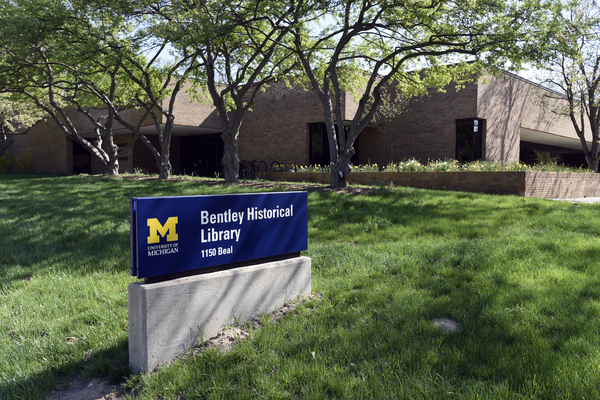The 1992 Accession of records of the University of Michigan Solar Car Team (4 linear feet) dates from 1989 to 1993 and consists of Visual Materials (videos and a photo album), a series of Binders, student end-of-term Group Reports, and Topical Files (from the Solar Car Team's filing cabinet).
There are two videos within the Visual Materials subseries. The Making of Sunrunner by George Bournias summarizes the creation of Sunrunner and details student participation in the project. The second video is actually a combination of two slide programs: Cut 1: The Sunrunner Down Under and Cut 2: USA and Australia Slide Program. The subseries also includes a photo album containing pictures of team members performing different tasks. Only a small number of the photographs in the album are labeled.
The Binder subseries includes a set of five binders (1 linear foot) maintained by Frank E. Stagg, exterior design group leader. Covering the years 1989 and 1990, these "Sunrunner Books" contain newsletters and bulletins, lecture notes, timelines, budget and sponsor information, wind tunnel data, exterior group agendas, work schedules and weekly goals, Australia race rules and general correspondence.
Also part of this subseries are the "Team Binders" (1 linear foot). These are arranged alphabetically by team function and also date from 1989 to 1990. These materials provide insight into the creation of Sunrunner, highlighting design concepts and testing results.
The Group Reports subseries (1 linear foot) is also arranged alphabetically by team function. This series (dating from 1989 to 1990) includes bound and unbound reports. The level of student reporting ranges from the general "what I learned on this project" to very detailed reports with charts, graphs, and accounts of individual accomplishments.
The Topical Files subseries (.75 linear feet) is arranged alphabetically and consists primarily of materials from the solar car team office filing cabinet. Materials in this series (dating from 1989 to 1990) include lecture notes from Aero Viroment, student applications and biographies, GM Sunrayce USA and World Solar Challenge information, meeting minutes, newsletters and bulletins. Also a part of this series is information relating to a student history project completed in 2001 examining the solar car team from its beginnings in 1989. Included is their final paper and correspondence with former team members about their experiences with the project.
